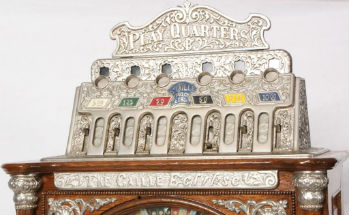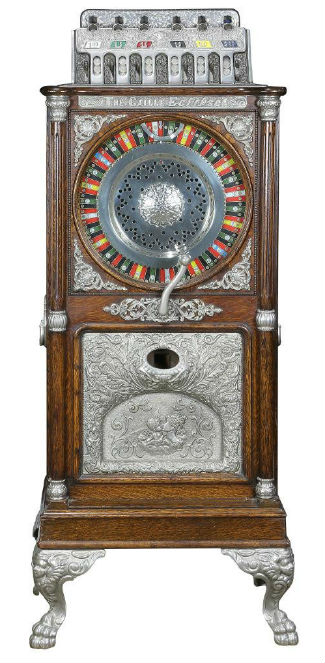
NEW YORK – In the late 19th and early 20th centuries, two companies dominated the coin-operated machine industry in the United States: Caille Bros. Manufacturing Co. in Detroit and Mills Novelty Co. in Chicago. But of the two, only one would earn the reputation as the “Rolls Royce” of floor machines – and that was the Caille Bros. The company enjoyed an enormous sales volume, mainly from the coin slot machines renowned for having the highest quality and design of their time. In 1904, they were Detroit’s largest employer (pre-automobile age).
There were two Caille brothers: Auguste Arthur Caille (who went by A. Arthur) and Adolph Arthur Caille. A. Arthur founded the company alone in 1893, at age 30, in Saginaw, Michigan, where he maintained a headquarters until 1896. The firm incorporated in 1901, the year A. Arthur took on Adolph as a partner and relocated to Detroit, under the official name Caille Bros. Manufacturing Co. Their initial operations were based on a capital stock of $300,000 (around $8.5 million in today’s dollars) and they operated for a time out of a modest building.

But growth was swift and sure, so much so that the brothers acquired the sizable Vanderbilt Match Co. factory building on Second Avenue in 1904 and renamed it the Caille Brothers Building. It was there the men oversaw a fine, modern plant that served as a world headquarters and produced a wide array of machines and other mechanical devices, not just slots. These included arcade games, weight scales, strength testers, gum machines, bagatelle-style games, “moving picture” machines (or nickelodeons), conveyor belts and even marine outboard motors.
The Caille Brothers’ initial success was no fluke. Both men were skilled mechanics and artisans – the very two traits needed to design, build and market their product line. The coin-slot devices they made ultimately led to the establishment of penny arcades, places where various coin-op machines could be played, all in one place. The company set up branch offices in New York, Chicago and Paris, cementing its reputation as a worldwide powerhouse. A. Arthur supervised the finance and sales departments; Adolph was in charge of manufacturing and office affairs.
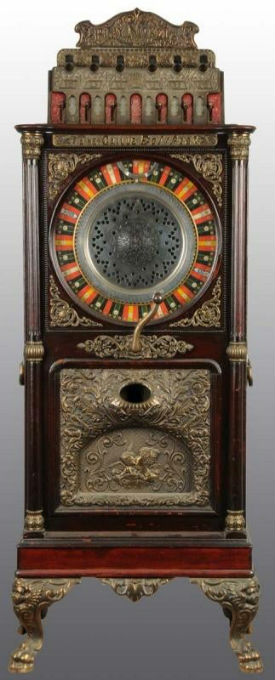
Times were good, but factors would soon chip away at the Caille Brothers’ success. First, the nascent automotive industry exploded on the scene in Detroit and lured away many of their employees. Then, in 1916, A. Arthur died, leaving the company without its founder and guiding light. Adolph decided to focus on trade stimulators and gambling machines, which left the mechanical game side of the business vulnerable to competition from new players, such as A.B.T., Erie Machine Co. and Chester Pollard and Exhibit Supply. The final blow came with the Great Depression, which led Adolph to sell the business to Fuller Johnson in 1932.
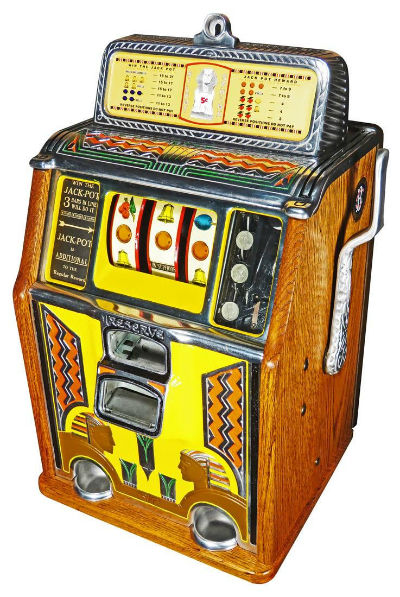
So, while the Caille Brothers success story wasn’t a lengthy one, it was certainly impressive. “Caille not only made dependable and durable machines, they took it to the next level with great design and eye appeal,” said Dan Morphy, president and owner of Morphy Auctions in Denver, Pa. “Since they made some of the most attractive machines ever produced, they rate highly on the demand list for collectors. Even though the demographic of collectors for early machines like those produced by Caille is aging, there is still a strong following for these prized machines.”
Rich Penn, president and owner of Rich Penn Auctions in Waterloo, Iowa, said all the coin-op machines from the era pretty much did the same thing: “You put in a coin – or several coins – and you might get more back, but you probably wouldn’t,” he mused, adding, “The difference in the machines was simply appearance. Caille machines were the most beautiful. The castings, and especially the coin heads, were beautiful period examples of the craftsmanship of their wood carvers and pattern makers. Most of the Caille machines could be recognized from 50 feet away, simply by the coin head. The rest of their machines were equally attractive. They had rich and lush period ‘flash.’ That’s what attracted players. And today it still attracts collectors.”
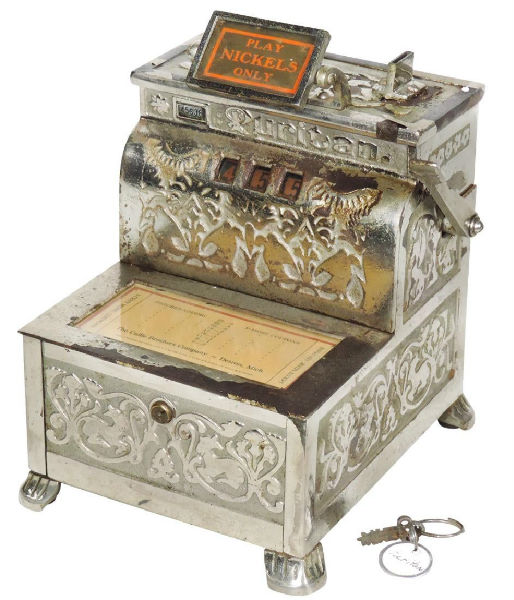
Penn said in the last few years, coin-op machines in general, including uprights, have taken a hit. “I think it’s a function of the demographics of the collector market,” he said. “A lot of the most serious collectors are no longer with us. They’ve either passed on or they’re liquidating their collections. They are no longer on the buyer side of the market. And they haven’t been replaced by new buyers. So, supply is still solid and demand is shrinking.
But there is a bright side, Penn said. “The collectors that are still active want the best machines. Those machines that are the rarest, the purest and the most attractive still bring strong money. It’s likely machines with those characteristics will continue to do well. Just not as well as they did years ago. In my opinion, Caille machines were, are and always will be, the most lovely, so collector interest will probably favor those machines.”
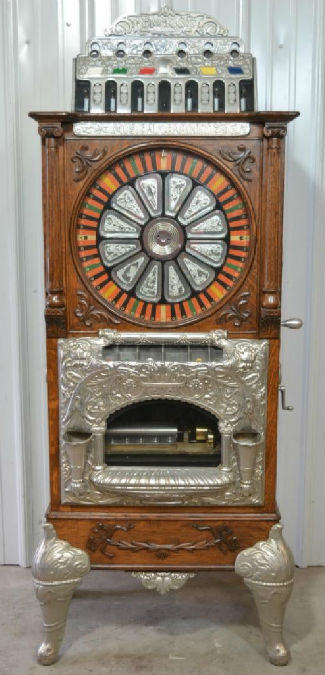
Bruce Turner of Kraft Auction Service in Valparaiso, Indiana, said the reason Caille machines are so desirable is because they had the best designs and complex abilities. “I compare it to going to the casino today,” he said. “Most people will gravitate towards the popular machines with all the bells and whistles. The Caille machines are also very early and rare. The popularity of the Mills slot machine was mostly from the business owner, because of the dependability of the machines and ease of repair. They just keep on going and are easy to repair and have a nice basic look.”
“As for the future,” Turner predicted, “I think it’s bright. Most people enjoy putting a nickel in a machine and pulling the arm. They add nostalgia to a man cave and a feeling of the gangster days and speakeasies. They’re just fun to play.”


